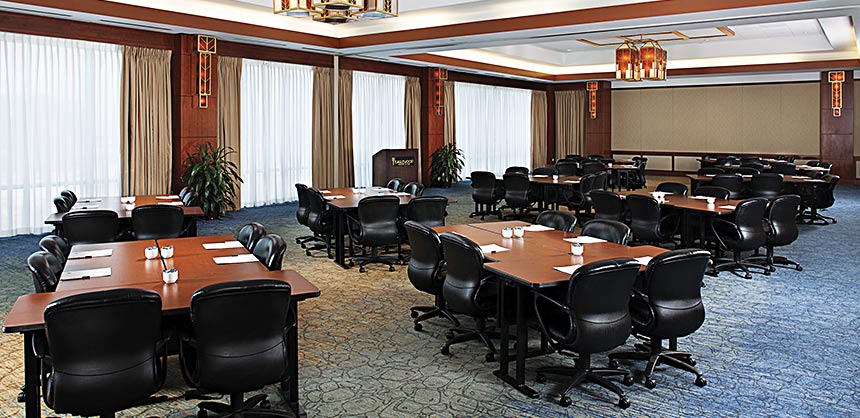The Conference Center DifferenceFebruary 1, 2014
Dedication to Meeting Spaces, Package Pricing and Superb Service By Gabi LoganThe Conference Center Difference
Dedication to Meeting Spaces, Package Pricing and Superb Service
Eaglewood Resort & Spa completed a $1.2 million renovation in 2013. Credit: Eaglewood
As convention centers and major hotel conference centers offer less space and fewer dates with limited amenities, turning to a conference center allows planners to stay within budget while offering attendees an experience with even more perks.
Though the meeting industry has rebounded and hotels are taking more powerful positions in negotiations, conference centers are still proceeding cautiously, eager to work with planners to create the best agreement for all parties. Thriving conference centers are placing a higher priority in their packages, services, and physical spaces to help planners provide that intangible something special for attendees.
In the Seller’s Market, Planners’ Needs Can Take a Back Seat
“People feel like the economy is coming back, and they’re willing to have more meetings, but while we’re able to have more meetings, we’re not able to pay more for them,” shares Judy Anderson, senior manager, meetings and travel, for Grapevine, TX-based GameStop. “I will choose locations that will keep rates steady. Going five dollars over my room rate will cause me to leave.” While many planners share her sentiments, not all hotels are listening.
Julie Powers, CMP, manager, global accounts for HelmsBriscoe in the Lake Forest, CA, office, comes across a wide swath of the market in her work, and suggests the writing is on the wall. “We’re going into a seller’s market,” she says. “We were starting to see it at the end of 2013 and now in 2014, it’s going to be in full force.”
When Joann Chmura, CMP, CMM, meeting and event manager at Stamford, CT-based Viridian Energy (at the time of this writing) set out to plan Viridian’s main 2014 event, she had to begin at square one. “We were trying to find a location. We were going to Baltimore, because we outgrew the size of the hotel in DC. The hotel in DC knew they couldn’t make it work, and we just shook hands and parted ways. I was trying to track someone down at the Gaylord National Harbor, and when I did she was very apologetic about the initial lack of response. The person we dealt with at DC ended up going to Gaylord, and he didn’t even follow up on our request.
“But we went to meet them, and then it took a couple weeks to get one room drawing,” she continues. “Then I asked for a contract and one week went by, then another and so on. We were thinking about going somewhere else, and then in one day, we had six drawings. Location number three is what we finally went with, and since we signed I went to Gaylord to tell them we went somewhere else, and they asked me why. I told them, ‘It just wasn’t going to work. You just weren’t doing everything you could to work with us.’
“It’s a seller’s market with the hotels and convention centers, and it wasn’t like that a few years ago,” Chmura shares. “I just started getting the feeling that if we’re not getting the focus now, how is it going to be while we’re onsite? I think they lose sight that this is about relationships. Why burn that bridge? That person isn’t going to be there forever.”








